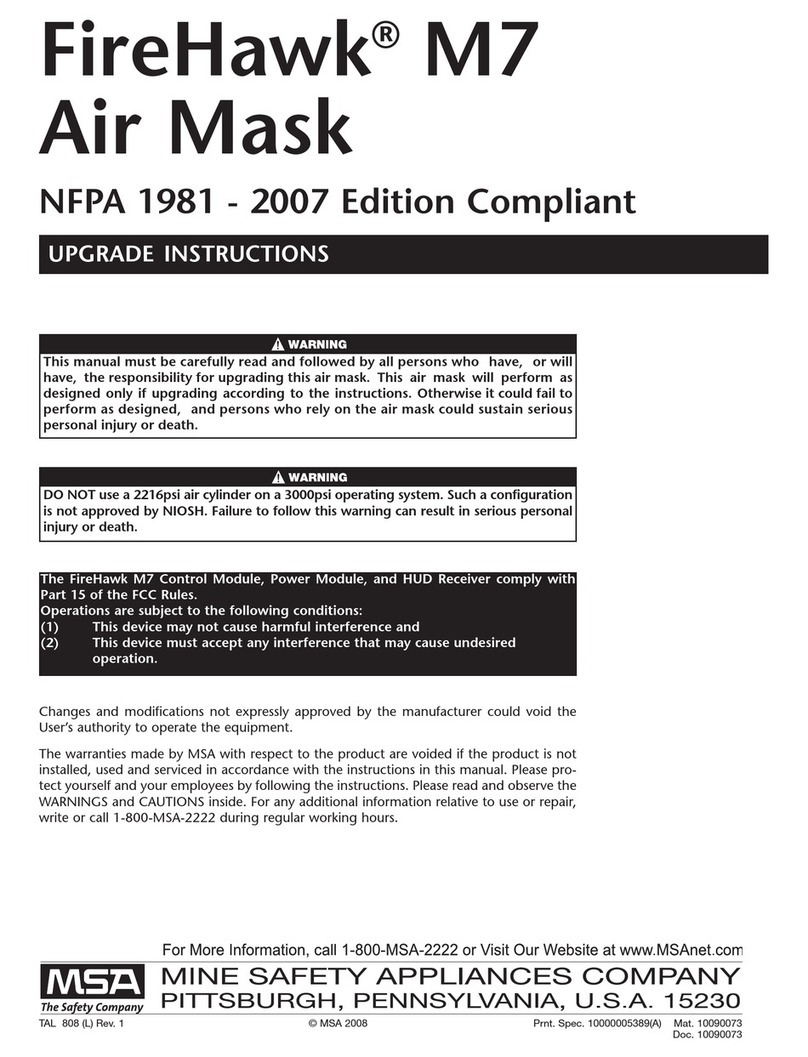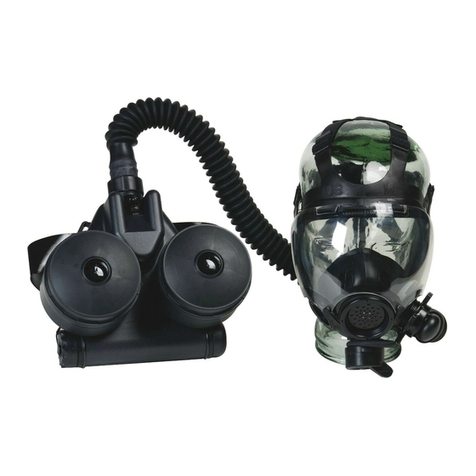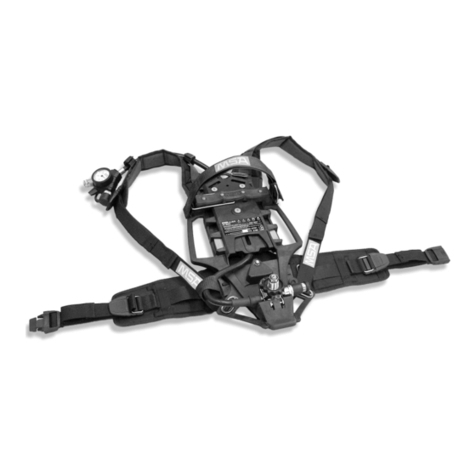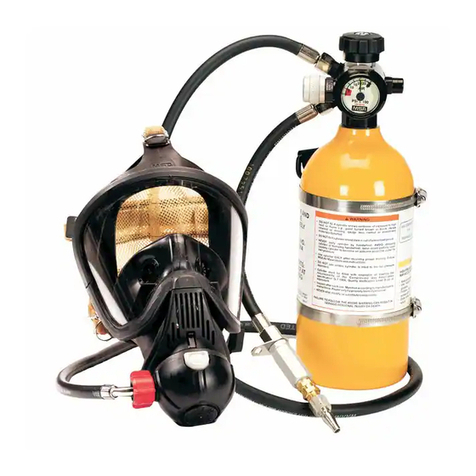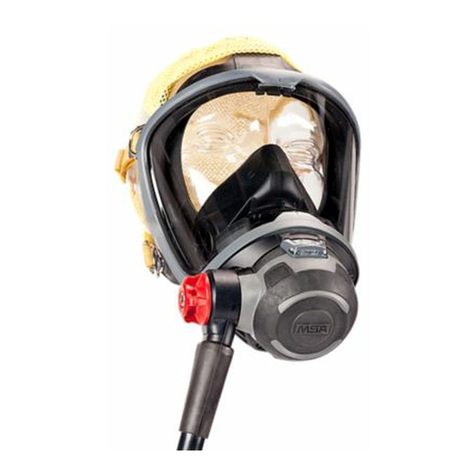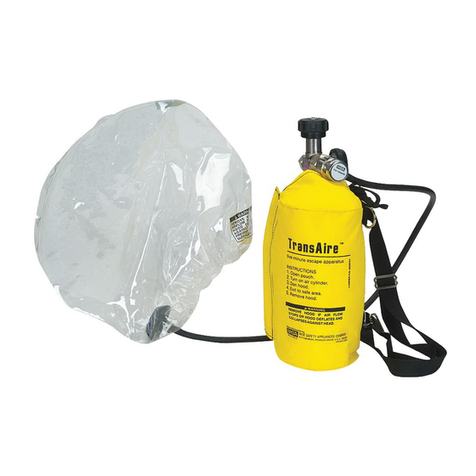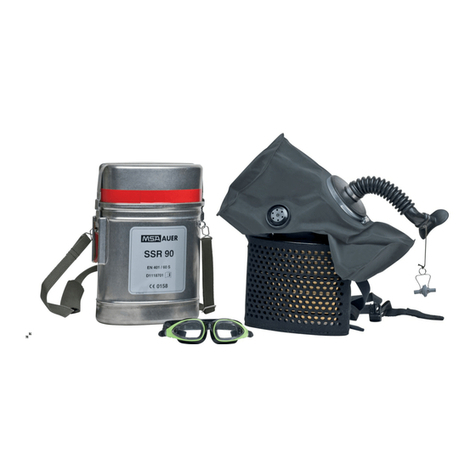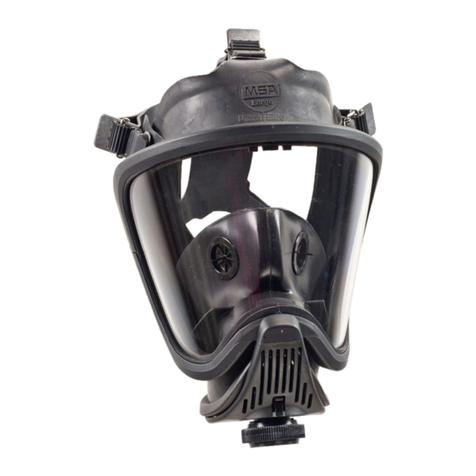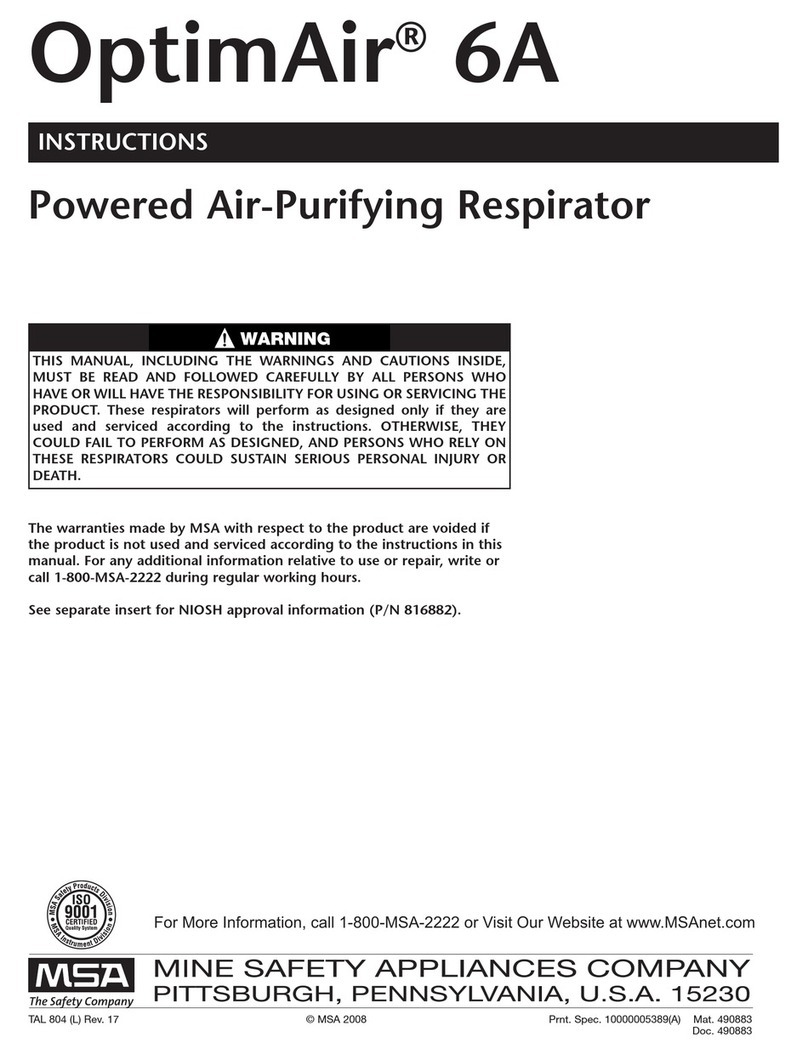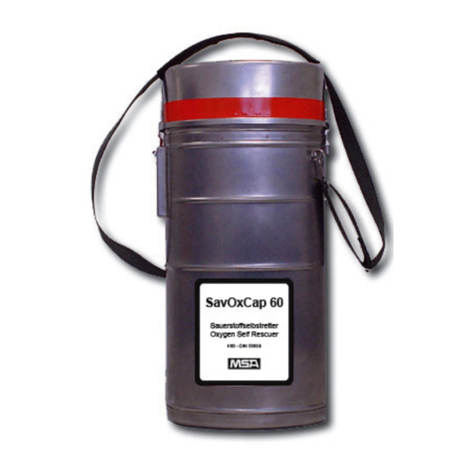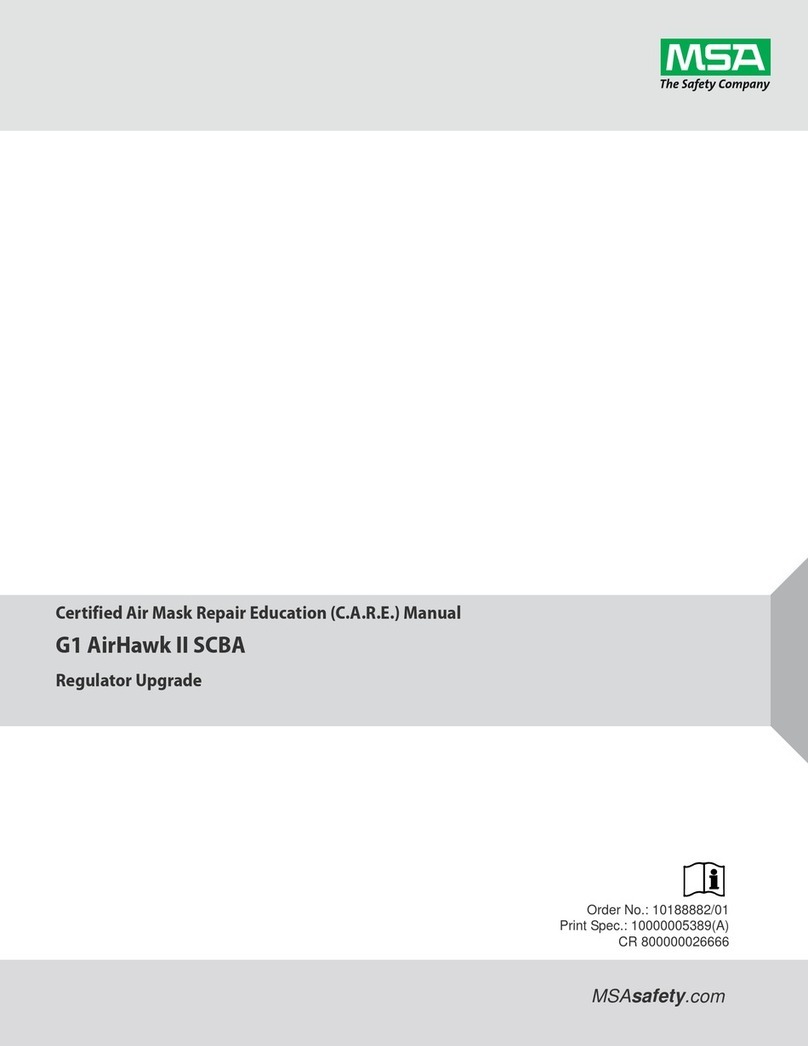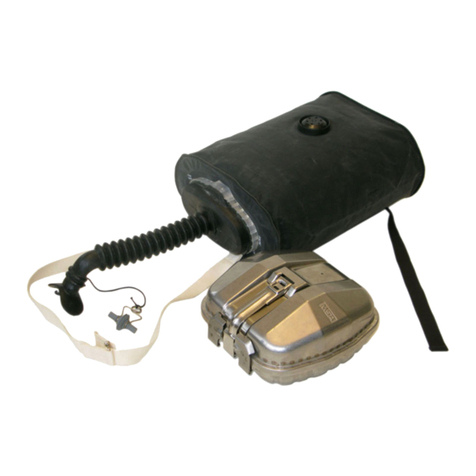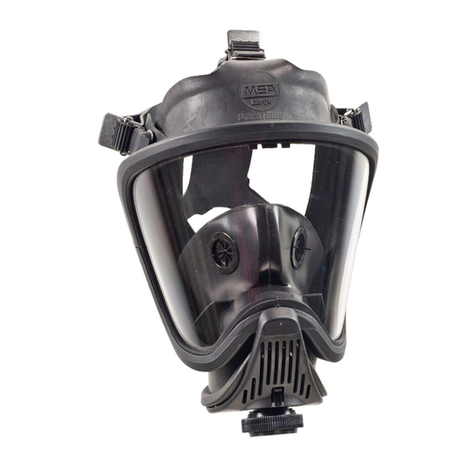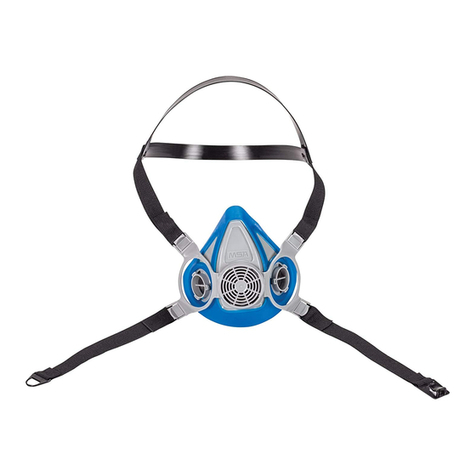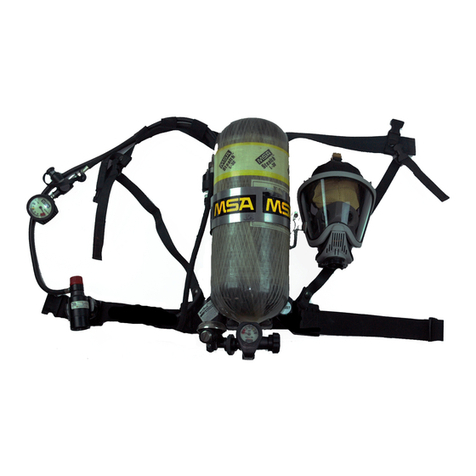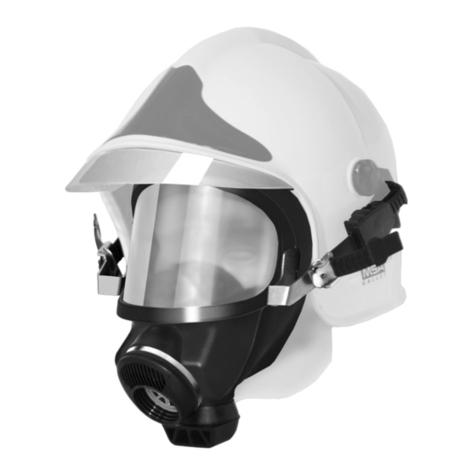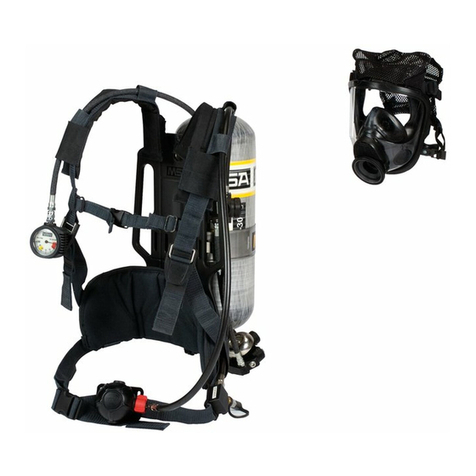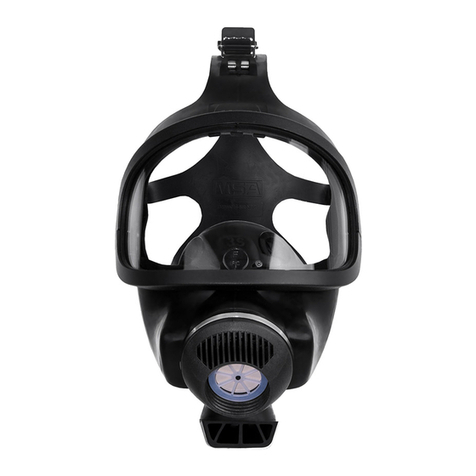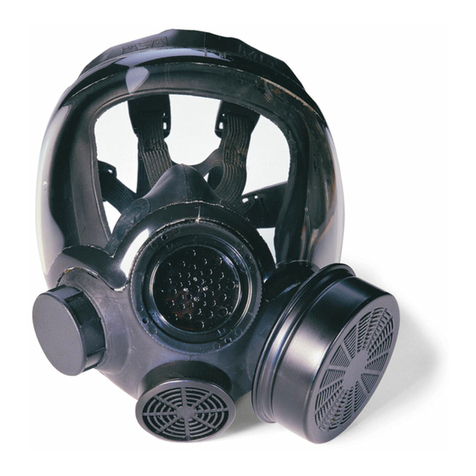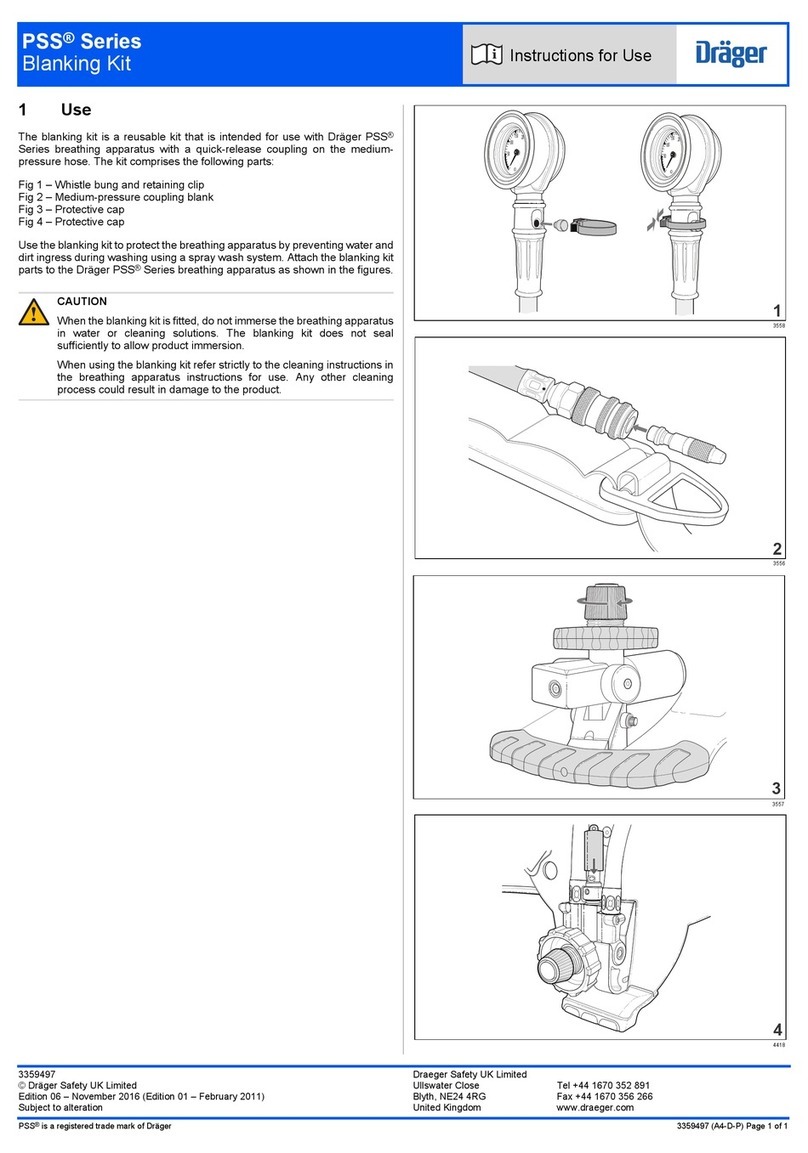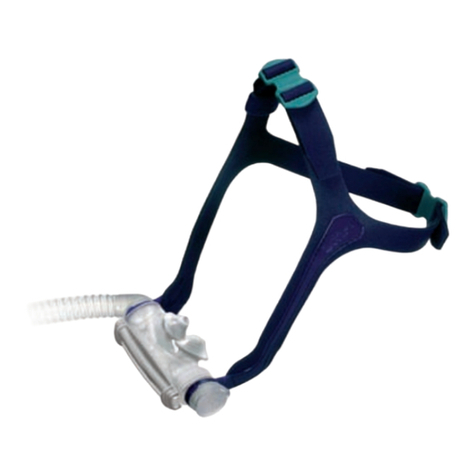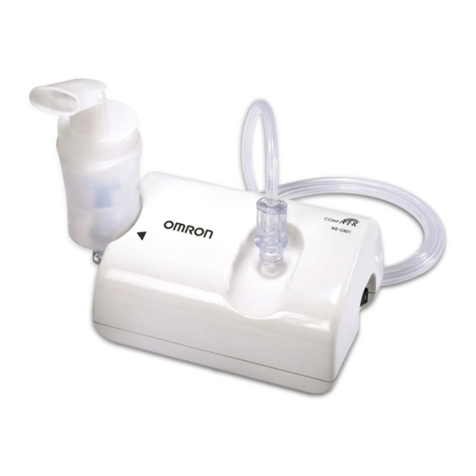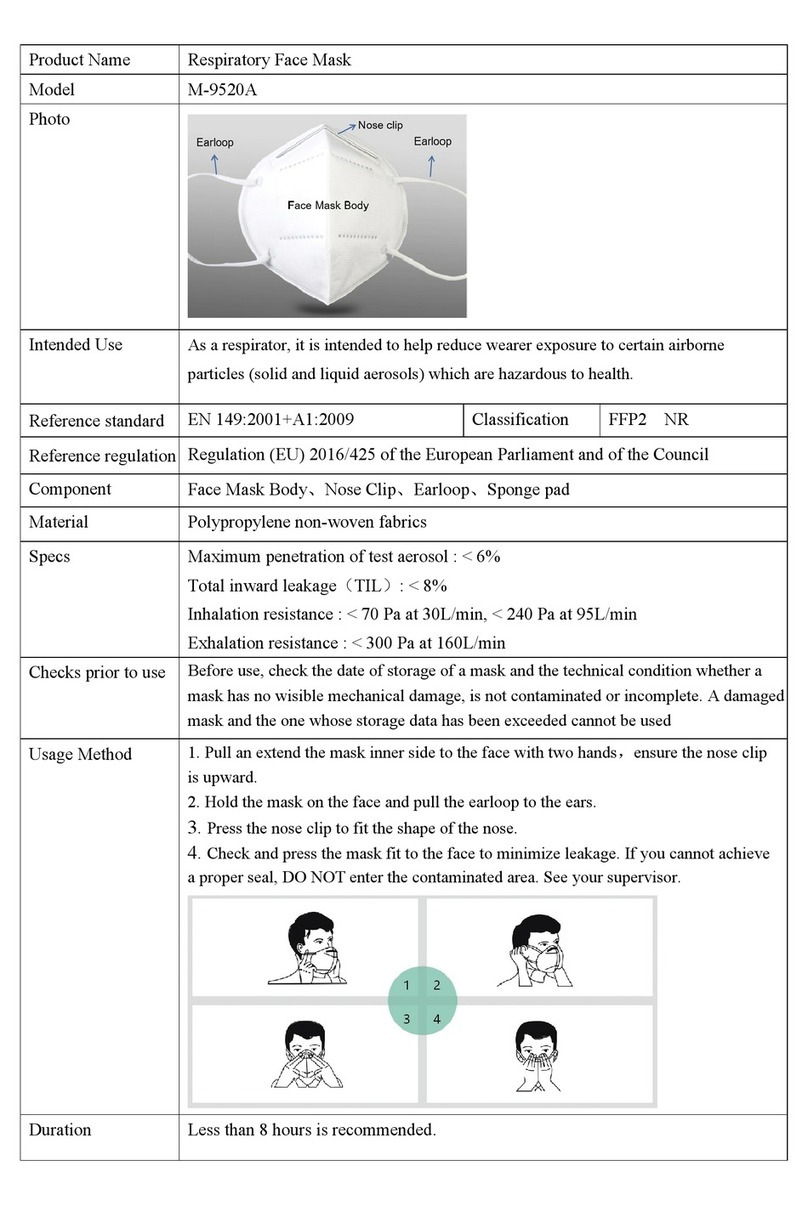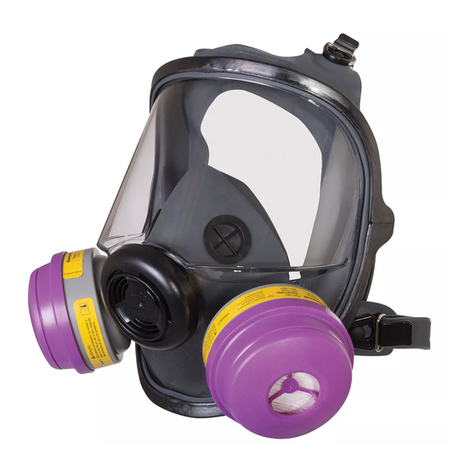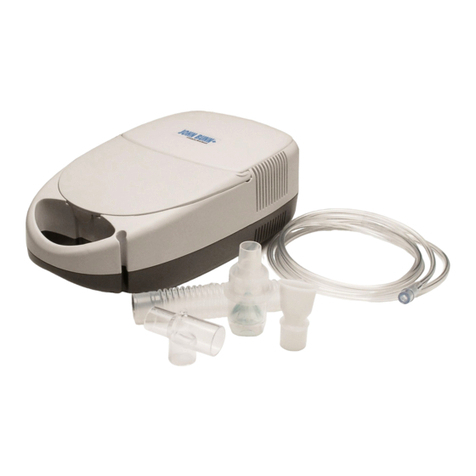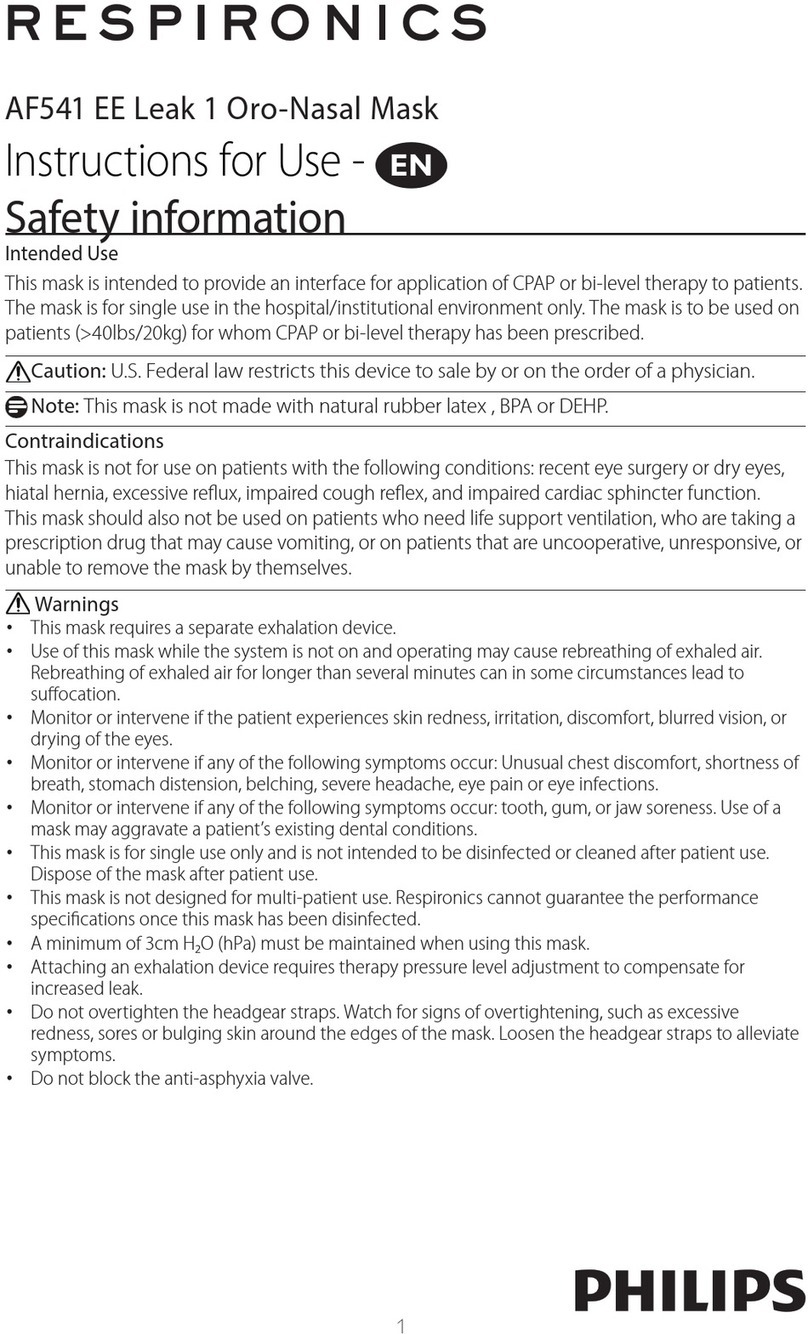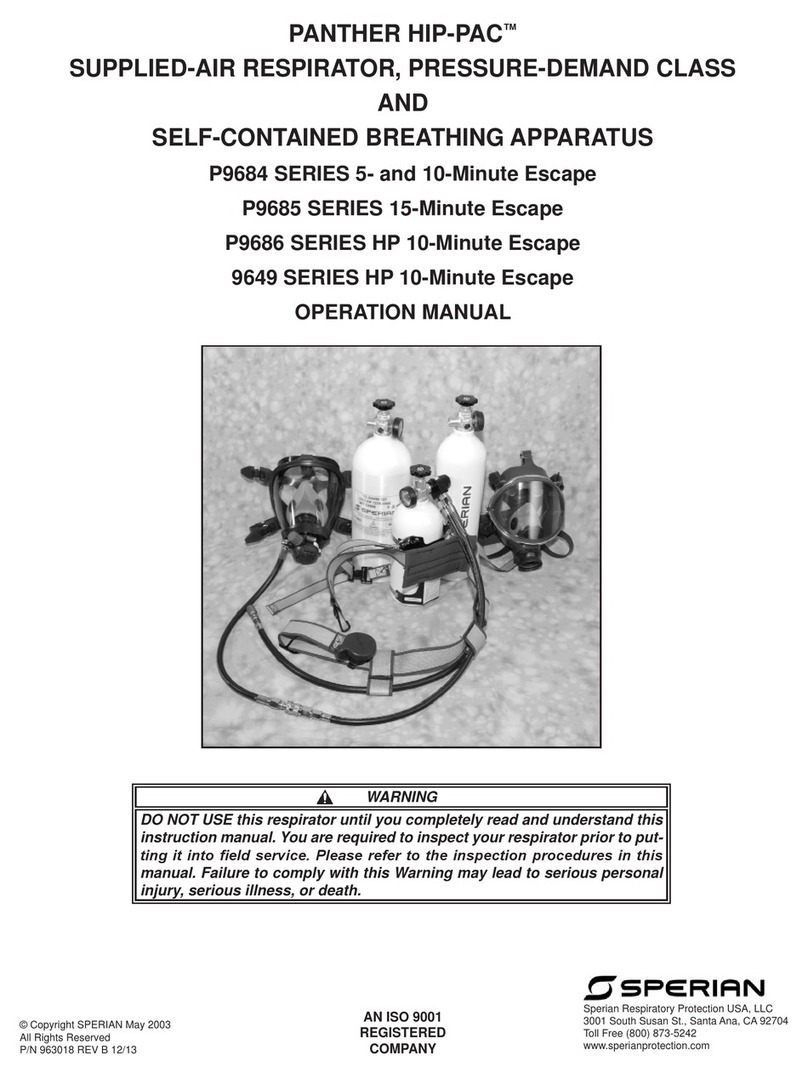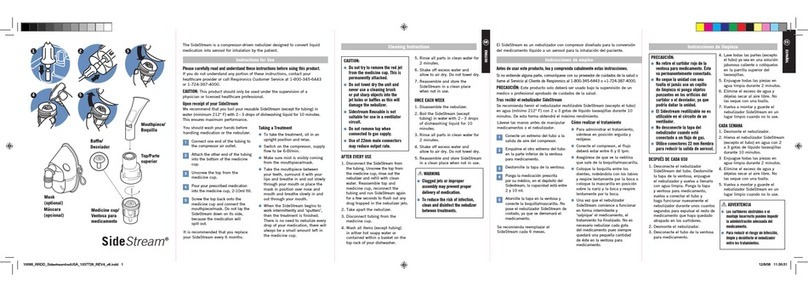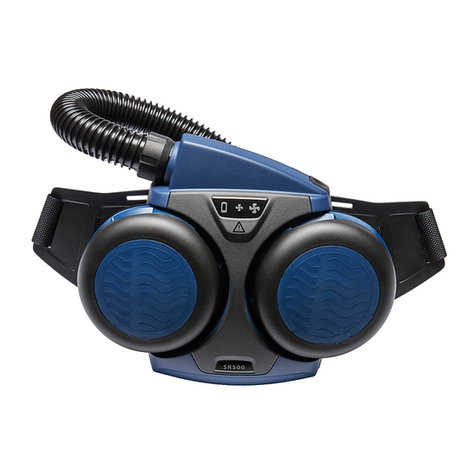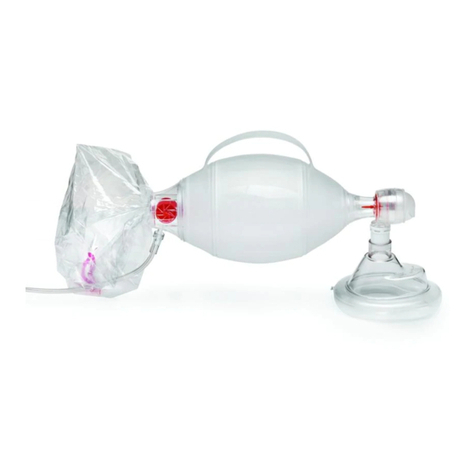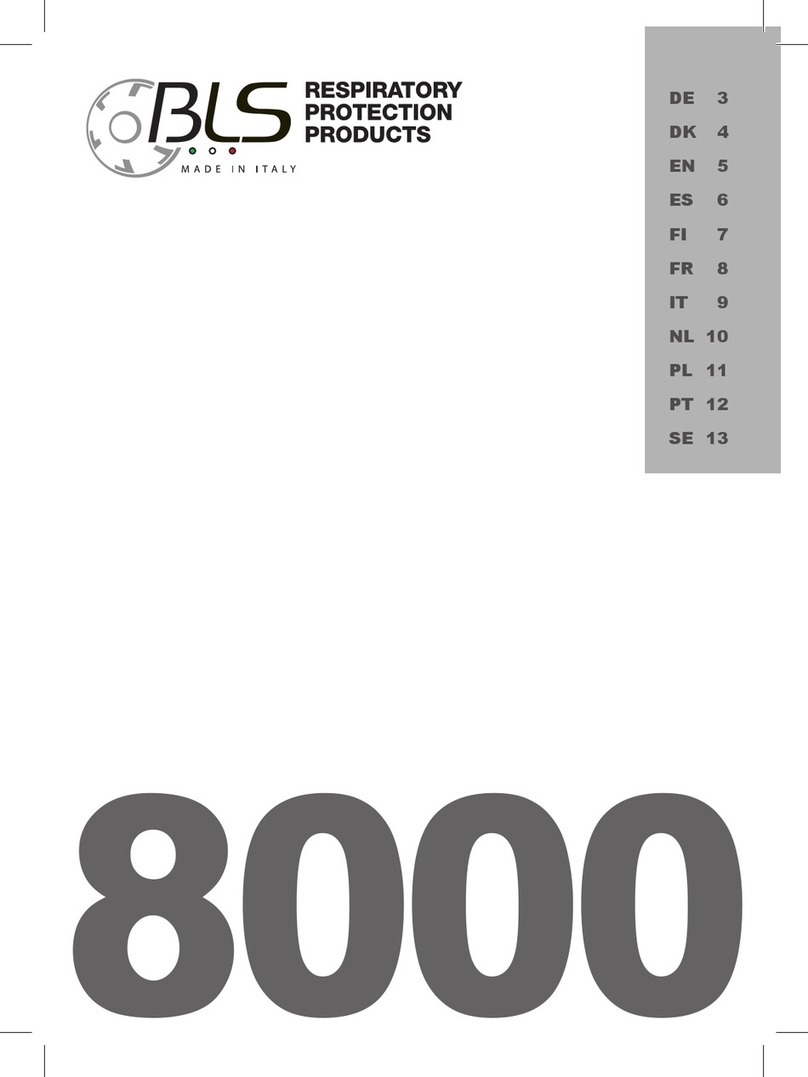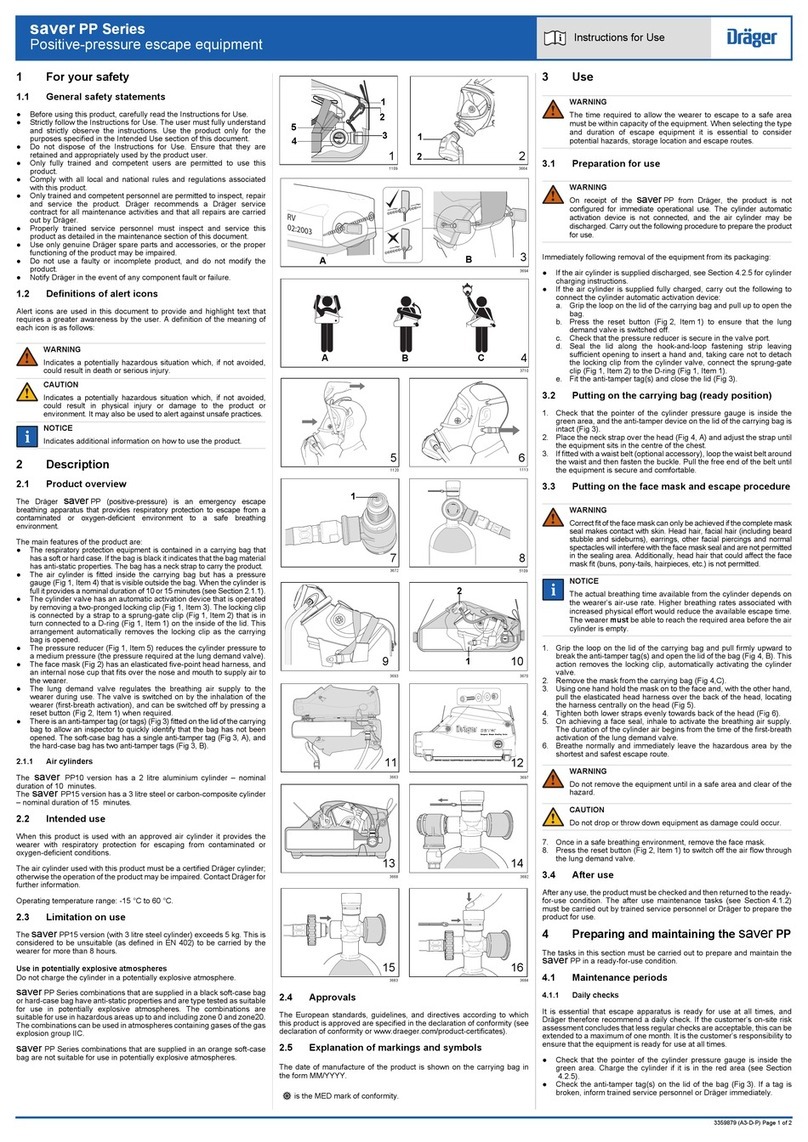
G1 Facepiece 5
Safety Regulations
GB
1 Safety Regulations
1.1 Correct Use
G1 Facepieces - hereafter called masks -are full face masks with a positive pressure connection.
They are not complete respiratory protective devices by themselves, but serve as facepieces
[EN 136 CL3+] for use with compressed air breathing apparatus of the G1 series and respiratory filters.
The mask as part of a respiratory protective device ensures an appropriately tight fit of the user’s face
against the ambient atmosphere.
When using a compressed air breathing apparatus, the operating manual for the compressed air
breathing apparatus must be read and observed.
If the mask is used as part of a filtering device using the filter adapter, respiratory protective filters
equipped with a standardized thread according to EN 148-1 must be used.The type and concentration
of contaminants and the oxygen concentration in the ambient air must be known to decide if the use of
a filtering device is permissible. The instructions for use of the respiratory filters have to be regarded,
including any information regarding the use in potentially explosive atmospheres. When in doubt use
a supplied air breathing apparatus. The permitted minimum oxygen concentration of ambient air
depends on national regulations.
When used in oxygen or an enriched-oxygen atmosphere, the increased potential hazard of flamma-
bility has to be regarded.
WARNING!
According to the European directive 89/656/EC it has to be verified before first use of the mask that a
correct size has been chosen (proper tight fit), that the mask can be worn in combination with other
protective equipment (for example a protective jacket), that it is a correct choice for the conditions at
the particular place of use and that it fulfils the ergonomic requirements.
WARNING!
Read this manual carefully before using the device. The device will perform as designed only if it is
used and maintained in accordance with the manufacturer's instructions. Otherwise, it could fail to
perform as designed and persons who rely on this device for their safety could sustain serious personal
injury or death.
Before use the product operability must be verified. The product must not be used if the function test
is unsuccessful, it is damaged, a competent servicing/maintenance has not been made, genuine MSA
spare parts have not been used.
1.2 Liability Information
MSA accepts no liability in cases where the product has been used inappropriately or not as intended.
The selection and use of the product are the exclusive responsibility of the individual operator.
Product liability claims, warranties also as guarantees made by MSA with respect to the product are
voided if it is not used, serviced, or maintained in accordance with the instructions in this manual.
Changes and modifications not expressly approved by the manufacturer will void the user’s authority
to operate the equipment.

